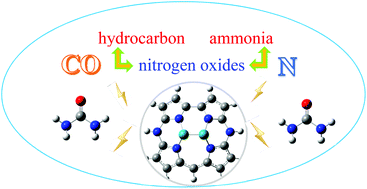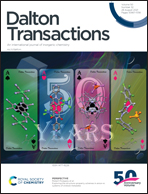Electrochemical reduction of CO2 and N2 to synthesize urea on metal–nitrogen-doped carbon catalysts: a theoretical study†
Abstract
Fossil fuels have been increasingly consumed since the industrial revolution, causing rapid increases in carbon dioxide emissions and disrupting the global carbon cycle. With increasing attention being paid to the harmful effects of carbon dioxide as a “greenhouse gas”, its use as a feedstock for basic chemical production is an attractive topic. Nature benefits humans through “crops brought by thunderstorms”. Combining these two methods to produce urea containing nitrogen is the focus of this paper. In this paper, a series of catalysts supported on the substituted corrole substrates in the form of a double transition metal are investigated by DFT calculations. The best catalyst was selected and combined with carbon and nitrogen reduction to further explore the catalytic performance of urea synthesis. Based on this study, it was found that the synergistic catalytic strategy of double active sites had broad prospects in urea synthesis, and could also provide new development strategies for the design of other efficient molecular catalysts.



 Please wait while we load your content...
Please wait while we load your content...